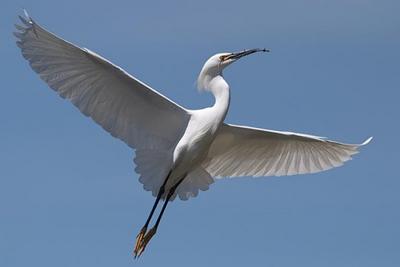2003 Fermilab Bird Report
For more information see the
"Birds of Fermilab" web pages.
Winter

|
| Ruddy Shelduck (Photo linked to http://www.lincsbirdclub.co.uk)
|
|---|
The 2002 Christmas Bird Count produced a
good on-site species count of 47 and a fairly average individual count.
Fermilab site specific highlights included our first count records of
Winter Wren and
Cedar Waxwing. The former is typically
occurs on site as an uncommon migrant and the latter is a summer resident
though there have been some recent winter records. Both species have been
found with increasing regularity on the off-site part of count. Record high
numbers were recorded for Common
Mergansers, Common Goldeneyes,
and White-throated Sparrows.
Once again the results are consistant with increasing numbers through spending
the winter on site. All these results are consistent with what one would expect
from Global Warming. The count this year also confirmed the expected impact of
West Nile Virus on local crow
populations. Record low counts were recorded both on and off site. 18 birds
were found on site compared to an average of 53 from the previous 10 years. For
the entire circle the reduction was even more dramatic; 173 birds were found
compared to an average of 1070. The effect, if any, on other species was much
less significant. In particular Blue Jay and
Black-capped Chickadee numbers,
though well down from the record highs recorded last year were not much below
the range expected from normal fluctuations.
The remainder of the winter was fairly uneventful though there were several
Bald Eagle sightings and some ten or so
Long-eared Owls were found inside the
Main Ring late in the season. The latter were particularly appreciated since
none were recorded on site during the previous winter.
In February we also came across a Ruddy Shelduck on Main Ring Lake! This is a
rare eurasian species (the photograph was taken in England) which is also
popular with waterfowl collectors and hence birds found in the U.S. are much
more likely to be escapees from collections than true vagrants. Consequently,
this species was not added to the official Fermilab list.
Spring

|
| Sandhill Cranes
|
|---|
The early spring migration of waterfowl was quite good this year, with all the
expected species showing up in reasonable numbers as well as several records
for both Tundra Swans and Mute Swans. However, the warbler migration in the
late spring was rather disappointing, though there were quite a few records of
Pine Warbler in April, and in May there
was a Cerulean Warbler and several
Orange-crowned Warbler
sightings. However, the most significant find of the season was probably the
pair of Sandhill Cranes which were
present inside the Main Ring and appeared as though they might nest there.
In early April we had an opportunity to assess the affect of Spring burns on
displaying American Woodcocks. The
south west portion of the ring was burnt in early April when woodcock courtship
displays were at their most active. Their activity was monitored before and
immediately after the burn. Before the burn the birds could be found on both
sides of the trail the divides the southern half of the ring, but were mainly
concentrated on the west side where the burn was to take place. On the evening
after the burn the birds did return to the area but had moved their display
activities to the unburnt section. These observations validated our policy of
ensuring that at least one of the southern quadrants is not burnt during the
Spring.
Summer

|
| Snowy Egret
|
|---|
This was not a good year for our rarer grassland birds. For the first time in
at least years, there were no Upland
Sandpipers recorded this year and the number of
Henslow's Sparrows
on site was much reduced from last year. There were some early sightings in the
dog-training area, but in the end the only reliable site was by the wetland
mitigation area in ELM-4. Grasshopper
Sparrows were also absent from their usual haunts along Eola Rd. However,
several pairs had established a new colony on the dirt pile left over from the
Main Injector excavation.
Breeding Red-headed
Woodpeckers on site have become unusual in recent years and hence it was
encouraging to discover several birds hanging out in the dead trees inside the
Main Ring in late June and early July. July also brought a new species for the
site when a Snowy Egret was seen at the
south end of Lake Law.
Fall
Fall migration got off to a promising start this year with a flock of six
Hudsonian Godwits turning up at the
south end of Lake Law in late August. This is only the second time this species
has been recorded on site. Waterfowl migration was also quite good early in the
fall with a good variety of species spending tie on Sea-of-Evanescence,
however, the late fall migration was something of a disappointment with both
small numbers and poor variety occuring during the peak months of October and
November. As if in compenstation, there were relatively frequent sightings of
Rough-legged Hawks and
Northern Shrikes late in the season.



